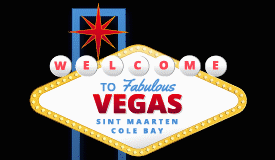By Fabian A. Badejo
The furore unleashed by the vicious attack on our national bird, the Pelican, by some talk show hosts on some radio programs recently reveals a very sad and disturbing fact: our propensity to deride, denigrate, and de-value works of art and consequently our culture, usually borne out of ignorance, disrespect, self-hatred and a colonial mentality that has taught us to see whatever we produce as insignificant and of no value in comparison to what the colonizer has appropriated as his own unrivaled contribution to human knowledge and progress.
What is so abnormal about the price tag of US$254,000 which the Princess Juliana International Airport is paying for three (3) bronze sculptures of our national bird, to be placed at the roundabout it also paid for, (the cost of which nobody seems to have any quarrel about) and which ultimately is meant as a gift to the government and people of St. Maarten as the airport commemorates its 70th anniversary?
In other words, what is so out of sorts for a bronze Pelican sculpture, made by an award-winning artist, to cost an average of US$84,666 each in this day and age? Do the people of this island not deserve to have their national bird immortalized in bronze?
Some people speak of pelicans in China costingUS$10,000 from some "suppliers". There must be a market in China where bronze pelicans are produced industrially and sold like china in a store! The insinuation here is that the airport could have gone to pick up these "life-sized" bronze Chinese pelicans for next to nothing instead of paying such a staggering sum of money for these ones. I guess those Chinese bronze pelicans are made by renowned artists. And of course, bronze must be so dirt cheap in China that only a select few know where to find it, and these do not include well-known sculptors in Europe, the USA and elsewhere!
My point is that if bronze were so cheap in China, the whole world would have been flying there to buy it, including the sculptor whose work is being compared to those of the Chinese "suppliers". It is like saying you can buy a flamboyant painting at the market in Marigot or Philipsburg for $50, so why commission Roland Richardson, a renowned St. Martin artist, to paint one and pay him US$30,000 or more? This is how expert these commentators are in terms of evaluating the worth of an art work! For them, apparently, art and culture is what you do, more or less pro bono, when the Queen or King comes on an official visit!
Curiously enough, nobody has raised any questions, or sought copies of any invoices regarding the numerous other bronze sculptures done by the same artist that have been erected on many roundabouts in the South, including the "Salt-Pickers" at the roundabout close to the Government Administration Building and the "One Tete" bronze statue in Cay Hill. There is, however, no roundabout, no public space, where our national symbol, the Pelican, has been placed. Do we understand what a national symbol really means? Especially, when rendered artistically? The way we treat such symbols, including their artistic renditions, is a reflection of how we see ourselves.
It is a shame that anyone would make an issue of this while the sculptures cost less than the salary of the CEO of our national airline, which is also, by the way, government-owned! The bronze sculptures will last a lifetime, but it is not certain that the CEO or the airline itself will last that long!
It is similarly interesting to note that the works that are being criticized for their "exorbitant" cost have not even been finished nor delivered yet to enable anyone to judge their artistic merits. So, what are we talking about?
However, the whole hoopla conforms to the disgusting narrative that everything African must be no good, worthless, or a rip-off! This is simply not acceptable, especially not during the celebration of Black History Month. Bronze casting is a century's old art in Africa. Ife Bronze from Ile-Ife and Benin Bronze, both in Nigeria, are world-renowned artistic expressions dating back to the 13th and 14th centuries which continue to astound European art critics. Is it a coincidence that the artist who is doing the bronze Pelicans for St. Maarten also originates from Nigeria? The story of how these and other works of the African creative and technical genius were stolen and carted away to grace European and US museums remains an essential aspect of the Reparations movement all over the world.
To refer to the three bronze Pelican sculptures as "ornaments" and their cost as a "bold investment" as the Today newspaper did in an ill-informed editorial, reveals how art and culture have been reduced to an unnecessary "luxury" at best, which we as a people cannot afford and should not spend our precious tax-payers money on. Such a standpoint is not only demeaning, but reflects the age-old Eurocentric view of the colonizer that art, as an expression of a people's soul, is not a product we should invest in.
And we, especially those of us of African descent, are expected to continue to buy into that? At what price?












